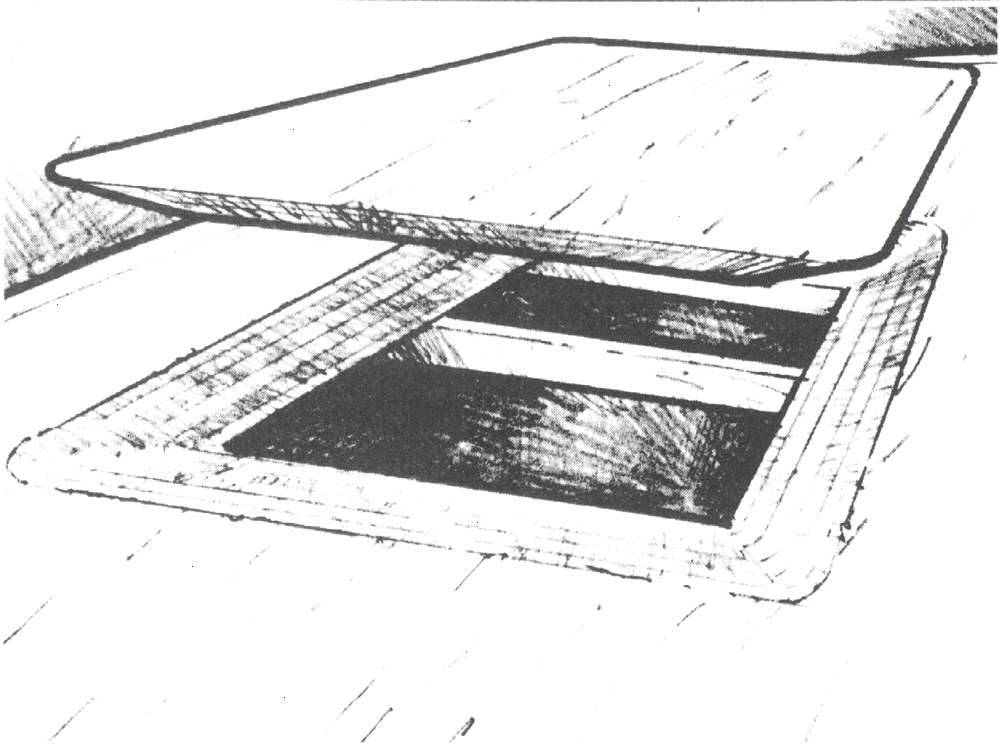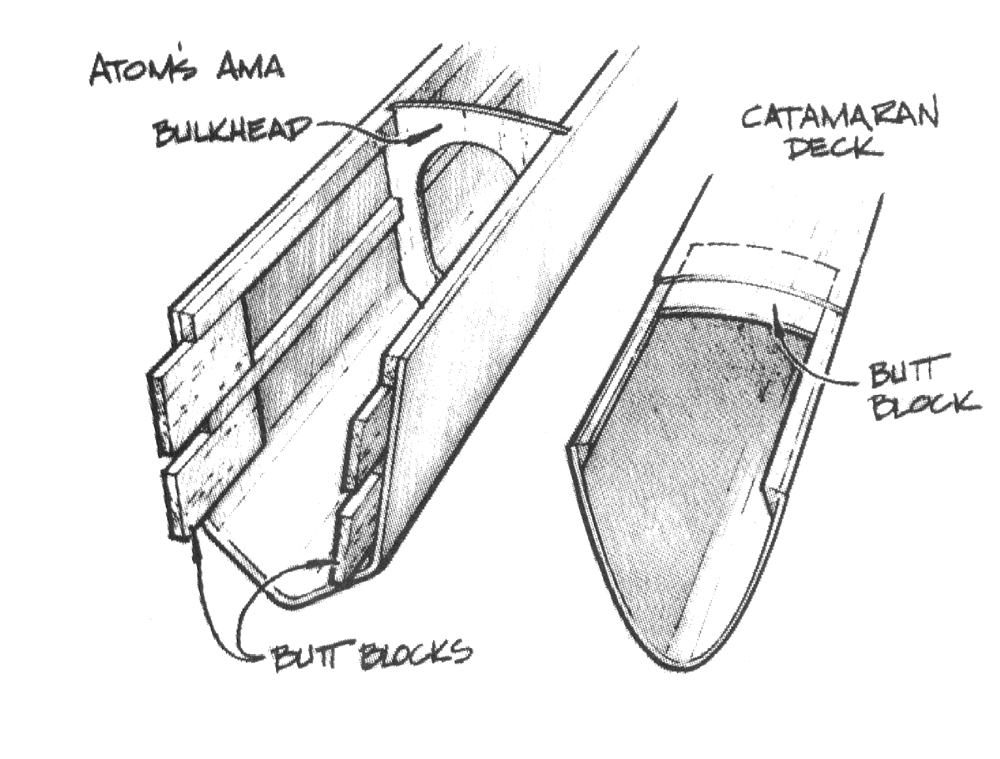Small Boat Repair
and Restoration
Making an Old Boat
Sound and Useable
by Dale Hedtke
"Hey folks, we are talking about regular old boats here, not rare
museum pieces..."
As an avid "old boat" guy I often come
upon old boats that are going to need some kind of repairs. The question that I always
struggle with is "do I make repairs (fix it so it works again) or do I restore
(return to original condition) the boat?"
Most of the projects that I take on are repairs
or rehabilitations. My goal is to make the boat sound and useable again. Doing so, I am
comfortable with using non-original materials and techniques. If my goal is to restore a
boat I try to stick with materials that are similar to those that were originally used.
There are many commercial sources for original hardware or reproductions.
Hey folks, we are talking about regular old boats
here, not rare museum pieces or boat house queens.
 However, if you do find something that truly is rare, be
careful, sometimes doing nothing is the best approach. Do not remove any finishes! Do
protect the boat from the weather and make sure that the hull is well supported. Wooden
Boat Magazinepublished an article in the September/October 1999 issue (#144) called
"What is Museum Quality" that is worth looking at. It offers a more
sophisticated look at restoration and conservation.
However, if you do find something that truly is rare, be
careful, sometimes doing nothing is the best approach. Do not remove any finishes! Do
protect the boat from the weather and make sure that the hull is well supported. Wooden
Boat Magazinepublished an article in the September/October 1999 issue (#144) called
"What is Museum Quality" that is worth looking at. It offers a more
sophisticated look at restoration and conservation.
My first step when evaluating a boat acquisition
(after convincing my wife, neighbors, and others that I have a good place to keep it) is
to go through the whole boat and clean it out. This is actually my favorite part of the
process, because this is discovery stage of the project. Pull up the floorboards, clean
out the bilge, wash the whole boat, empty out the storage compartments and lockers, look
through the owner's manual, etc. You will learn a lot about the previous owners and how
they used the boat, and you may also find out some about the boat's maintenance and repair
history. I love this bit of marine archeology. Look for parts and fasteners dropped in the
bilge, keys, fish hooks & sinkers (I pulled a couple of dozen sinkers from my old
Thompson runabout). Save everything that is not obviously garbage. I often discover the
use of some weird looking part of fastener that is not attached to the boat when I get it.
While you are cleaning the boat, start evaluating
the boat's condition: look for broken ribs and planks, rot, broken or missing fasteners,
failed paint, open joints, loose or broken engine mounts, etc. Begin making detailed lists
of parts needed and tasks. I love lists!
When you get down to making repairs, take your
time, think things out, and don't strive for perfection. I have a few principles when
working with old boats. First, I remind myself that it is just a boat-I am not curing
cancer with my repairs. I'm just trying to get the boat back on the water. Also, almost
any repairs you make are going to improve the boat. The repairs do not have to be perfect.
Below, I present a few details concerning repairs:
Broken Frames
Add another frame next to or on top of the old
frame. This is called "sistering". Attach this sister with epoxy, screws,
clamps, or bolts. If the frame is curved (a bent rib) it may be possible to approximate
the form from the hull's form, from an adjacent plank, or from the other side of the hull
(a mirror image.)
Rotted or Damaged Planking
 Repairs may be possible in two general ways. If the damage
is extensive, remove an entire panel or a section bounded by the keel, a chine, and two
frames. A Variation of this technique is to add a butt block between frames to back up a
joint between new and old plywood sections. This works better if there is not much twist
in the panel. Another (more elegant) variation is to cut out the damaged section and
remold the section. To do this the plywood edge needs to be cut back, as if to scarf the
panels together. This can be done with a chisel, plane, saw, router or sander. Another
valid approach is to cut a series of "steps" in the planking and fit in
increasing larger lamination of plywood or beneer. It may be necessary to add some
fiberglass tape or cloth to the inside (and outside) of this patch. Try to get the inner
surface as smooth as possible-try for a color match on the wood. Fair the outer surface as
required.
Repairs may be possible in two general ways. If the damage
is extensive, remove an entire panel or a section bounded by the keel, a chine, and two
frames. A Variation of this technique is to add a butt block between frames to back up a
joint between new and old plywood sections. This works better if there is not much twist
in the panel. Another (more elegant) variation is to cut out the damaged section and
remold the section. To do this the plywood edge needs to be cut back, as if to scarf the
panels together. This can be done with a chisel, plane, saw, router or sander. Another
valid approach is to cut a series of "steps" in the planking and fit in
increasing larger lamination of plywood or beneer. It may be necessary to add some
fiberglass tape or cloth to the inside (and outside) of this patch. Try to get the inner
surface as smooth as possible-try for a color match on the wood. Fair the outer surface as
required.
Broken or rotted knees
Use the old ones for the pattern. Sometimes you
need to make up a shape when nothing is left.
Plank replacement
This is a subject that I frankly don't know much
about, so I am going to leave a blank in my discussion. Consult a book on wooden boat
building and repairs, or hunt theWoodenBoat Magazine's index and back issues.
Fiberglassing the hull
Quite a bit has been written regarding sheathing
the outside of old boats with fiberglass cloth and epoxy in an attempt to "save"
them. The boating magazines and epoxy supplier have ample instructional information on
doing this. There is one over-riding principle when considering preservation of an old
hull by chemical means: what ever you do to the outside of the planking should be done to
the inside. This means that if you sheath the boat's bottom with a fiberglass and epoxy
matrix, the inside of the planking should be epoxy coated as well. This creates a
"balanced panel" that will not have moisture moving thru it on one direction
only. (The wood must be dry before encapsulation.)
Many times it is just not feasible to remove the
old finish from the inside of the boat in order to prepare it for epoxy coating; you must
let your intuition guide you. If you are working on an old boat that will be lost anyway
if you don't coat the outside, you probably will be justified in the one sided approach.
A note about epoxy and polyester resins: Modern
marine epoxies are easy to use and provide a strong, waterproof composite matrix. They are
suitable for coating new & old wood, gluing up joints, making fillets, filling gaps
& rot pockets, and laminating beams & panels. Epoxy and the associated additives
are also useful (and recommended) for repair work on fiberglass hulls that are built with
polyester or vinylester resins. The resulting repairs should be stronger than the original
construction. Not all epoxies are alike. There are differences between brands and also
between different products within a manufacturer's line; familiarize yourself with these
differences and the characteristics of the product you are working with. Polyester resin
is not recommended for any of the work mentioned above.
I hope that this simplified overview of boat
repairs is of help. Take your time when getting into repairs and understand what you are
doing before you start. Good luck!
Dale Hedtke owns The Boat House in St. Paul,
MN. 651-292-1448
Back
to Previous Issues
About Sailing Breezes Magazine
Please send us your comments!!
All contents
are copyright (c) 1998 by
Northern Breezes, Inc. All information contained within is deemed reliable but carries no
guarantees. Reproduction of any part or whole of this publication in any form by
mechanical or electronic means, including information retrieval is prohibited except by
consent of the publisher.
 However, if you do find something that truly is rare, be
careful, sometimes doing nothing is the best approach. Do not remove any finishes! Do
protect the boat from the weather and make sure that the hull is well supported. Wooden
Boat Magazinepublished an article in the September/October 1999 issue (#144) called
"What is Museum Quality" that is worth looking at. It offers a more
sophisticated look at restoration and conservation.
However, if you do find something that truly is rare, be
careful, sometimes doing nothing is the best approach. Do not remove any finishes! Do
protect the boat from the weather and make sure that the hull is well supported. Wooden
Boat Magazinepublished an article in the September/October 1999 issue (#144) called
"What is Museum Quality" that is worth looking at. It offers a more
sophisticated look at restoration and conservation.  Repairs may be possible in two general ways. If the damage
is extensive, remove an entire panel or a section bounded by the keel, a chine, and two
frames. A Variation of this technique is to add a butt block between frames to back up a
joint between new and old plywood sections. This works better if there is not much twist
in the panel. Another (more elegant) variation is to cut out the damaged section and
remold the section. To do this the plywood edge needs to be cut back, as if to scarf the
panels together. This can be done with a chisel, plane, saw, router or sander. Another
valid approach is to cut a series of "steps" in the planking and fit in
increasing larger lamination of plywood or beneer. It may be necessary to add some
fiberglass tape or cloth to the inside (and outside) of this patch. Try to get the inner
surface as smooth as possible-try for a color match on the wood. Fair the outer surface as
required.
Repairs may be possible in two general ways. If the damage
is extensive, remove an entire panel or a section bounded by the keel, a chine, and two
frames. A Variation of this technique is to add a butt block between frames to back up a
joint between new and old plywood sections. This works better if there is not much twist
in the panel. Another (more elegant) variation is to cut out the damaged section and
remold the section. To do this the plywood edge needs to be cut back, as if to scarf the
panels together. This can be done with a chisel, plane, saw, router or sander. Another
valid approach is to cut a series of "steps" in the planking and fit in
increasing larger lamination of plywood or beneer. It may be necessary to add some
fiberglass tape or cloth to the inside (and outside) of this patch. Try to get the inner
surface as smooth as possible-try for a color match on the wood. Fair the outer surface as
required.